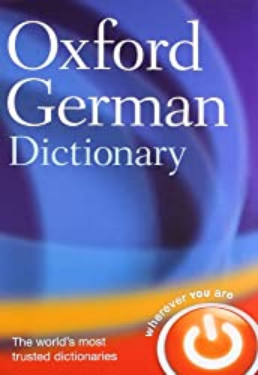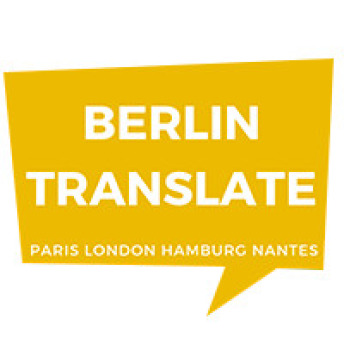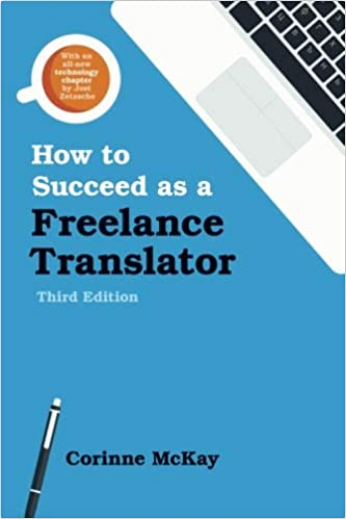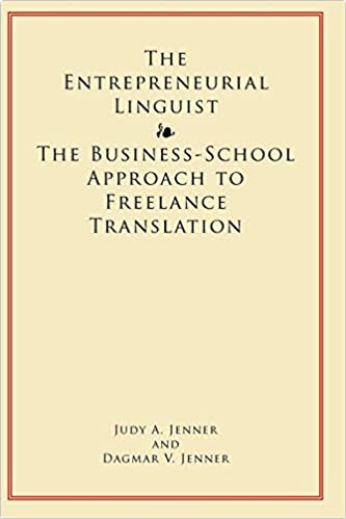- Home ›
- Buying Translation ›
- Translation & Transcription
Transcription & Translation
Turning Spoken German into Written English

Transcription is the process of converting speech into text.
Add the element of translation, and it’s a service you’d expect any good German translation agency or
freelance translator to offer.
However, it relies on the translator having a very good ear for German, not just a good eye!
I would it say it's a pretty tricky skill for anyone who hasn't lived in a German-speaking environment for a reasonable period of time.
Translation & transcription in a single step
I usually listen to the German audio recording, translate it in my head, and then type out the English translation directly.
This is quicker than the two stage process of first producing a written German version and then translating it.
Naturally, the drawback is that the client has no German text for their records, and can't check that the English translation is complete and correct.
A test of your German skills!
Transcription & translation is a good test of your “real” German language skills!
Dialects and accents vary hugely within the German-speaking world – even native German speakers aren't expected to understand them all. Here in Austria, for example, interviews on TV with Swiss-German speakers are sometimes accompanied by subtitles!
For the translator, if you don’t understand the accent or the slang spoken by the people in the recording, you're simply lost!
One of my agencies recently asked me to quote for a transcription & translation job. As soon as I heard the speakers were Swiss, I realised I'd never be able to do the job as quickly as a Swiss-based translator.
It turned out the agency had sent me the job in error, but it was another reminder of the rich variety of German as a language!
Transcription isn't as easy as you think!
Just as most German texts are not written with a view to being translated, many sound recordings are made with no consideration of the poor translator who will subsequently have to decipher what is being said!
The Germans are great engineers, and the majority of my transcription & translation work to date has been transcribing and translating interviews recorded in German factories.
Typical challenges this involves:

- Separating out the background noise from the recorded conversation – factory processes, doors opening and mobile phones going off are common.
- Everyone talking at once – after all it’s a normal conversation, we all do it!
- Slang, inaudible mumbling and interruptions.
- Strong regional accents or dialects – as we've noted, it ain’t all Hochdeutsch!
- Strange grammar & sentence construction - speakers often veer off, mid-thought, in the midst of a sentence.
- Technical terminology – those talking know exactly what they're talking about, and “swallow” or mumble technical terms with which they are familiar. You often have to hear these terms several times before they become clear.
What does transcription & translation cost?
First be sure about the service that's actually needed:
- Transcription – listening to the German audio recording and turning this into a German text.
- Transcription and translation – taking the spoken German conversation, translating it in your head and then typing out the translated English text.
Professional German translators work with standard line, page, and hourly rates.
Transcription is usually charged by the hour, and translation by the line or word.
So either expect to pay a combination of a line and hourly rate, or an hourly rate which reflects the complexity of the dual task.
I.e. the skills and time involved in transcription & translation are in no way comparable to the task of transcribing audio directly into text in a single language. And this will be reflected in the cost.
According to feedback in translator forums, and my own experience, on average the time it takes to
transcribe an audio recording is around 4 to 6 times the length
of the recording itself.
1 minute recording = 4 to 6 minutes of transcription
So take the length of the recording, multiply by 4 to 6, and that should roughly indicate the number of hours work involved. Then comes the translation.
The translator may also charge for “associated”
activities, such as keeping note of and listing all the time codes, so
there is a record of when each question or answer starts and stops.
This is a fabulously time consuming process.
How translators can improve their transcription skills...
Once you know enough German to translate, you just need to hone up your listening comprehension skills.
My suggestion – tune into a German radio station and record a programme or an interview. Practice typing out exactly what is said. It’s a great way of “getting your ear in”, and recognizing all the German varieties of the “ums” and “ers” which litter spoken English sentences!
Regularly listening to German radio or German TV is
something all good German translators will be doing anyway.
Software for transcription & translation
Audacity is free, open source, cross-platform audio software which is ideal if you need to clean up an audio file in order to hear the source recording properly. Of course, this is something the client should do before sending the recording to the translator...
Express Scribe: Makes hot keys available to start and stop audio play from within Word. Certainly worth considering for regular providers of translation & transcription services.
Dragon Naturally Speaking: Many translators use speech recognition software in the translation process. They read the German text, work out the appropriate English translation and then, instead of typing, speak their translation out loud.
The software then transforms the spoken word into written text and displays it on your computer screen. I use Dragon Naturally Speaking software to do this - it's inexpensive and very effective. I love it. Although it never removes the need to type entirely, it generally makes the process of getting the final product down on paper much quicker.
It is slightly harder using speech recognition software when you're combining the transcription and translation process – you'll need to listen to a section of German audio and then pause before activating Dragon Naturally Speaking. But it's ideal if the text is transcribed before being translated.
I hope this article on transcription & translation is useful. Other articles in this Buying Translation series are listed below.
Questions or queries? Contact me!
Joanna
German Translation Tips & Resources
- Home ›
- Buying Translation ›
- Transcription & Translation
Buying Translation:

Joanna Scudamore-Trezek
I'm a German to English translator living and working in Vienna, Austria. I turn German texts into clear and accessible English, allowing clients to present their stories, ideas and information to a completely new audience. My business and marketing clients rely on me to get their message across clearly and effectively. How can I help you today?














